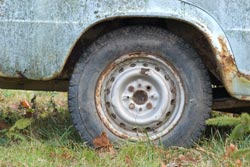Curiosities: Why don’t cars rust like they used to?
Rust used to be one of the great banes of car ownership. And because road salt accelerates rusting, the problem was especially severe in places like Wisconsin, where the roads are salted in winter. Many cars rusted to pieces long before they failed mechanically.

Statistics from 1995 pegged the overall price of corrosion at $300 billion per year, says Jay Samuel, a senior lecturer in the UW–Madison department of mechanical engineering. Over the past 25 years, he adds, “a lot of industries have improved, but the auto industry has done the best” in fighting corrosion.
The overall improvement reflects many individual changes, he adds, including better coatings — mainly paint — and more use of galvanized steel, which is coated with rust-resistant zinc on both sides.
Vehicles have also been redesigned without pockets for mud to gather, and rust-prone seams were removed. Metal has been replaced with rustproof plastic, especially at the rust-prone rocker panels below the doors. The removal of stainless steel and chrome-plated trim has cut galvanic corrosion, which occurs when different metals that touch each other generate a small electric current.
Car owners can’t do much to control rust, although repainting scratches and cleaning the car to remove road salt can help, Samuel says. “My advice is to keep it clean and hope for the best.” Rust never sleeps.
